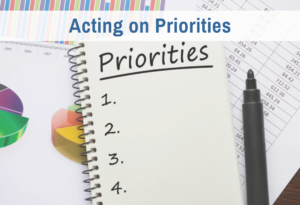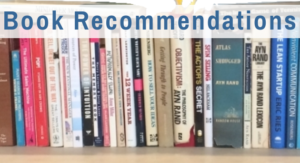Your greatest success comes from setting and achieving major goals. The biggest mistake that people make in pursuing such goals is that they don’t build motivation into every step. The effort you put in needs to pay off in some way to ensure you persevere to the end. How you make your effort pay off depends on the type of major goal it is. A vision is different from a mission and from a campaign.
Visions
A vision is a long-term goal with a clearcut outcome that you believe is under your direct control. Joe Calhoon (The One-Hour Plan for Growth) calls it: “a concise word-picture of [your] ideal future. Your vision should be measurable, achievable, and inspiring.”
A book is a vision-type goal. My vision is to clearly communicate how to execute plans without perfectionism and procrastination, in a 100-page book that objectively inspires readers to follow through and achieve their goals.
When you have a vision-type goal, you need to be careful not to fall into the error of expecting the payoff at the end. You need to get satisfaction from every step of the process. If you just have a couple of years of grunt work before you see results, you will not be able to sustain motivation on the task.
The best way to maintain motivation on a vision-type goal is to find ways to scale it down and evolve through a series of versions. For a book, you may start with an outline, then a synopsis, then detailed outlines for chapters, then drafts. Each of these is motivating in itself because it provides an objective stopping point and a chance to see how the communication is working.
Missions
A mission is a little different. It is something you want to see happen, but it is outside your direct control. You may find ways to influence others, but you cannot personally do it.
For example, part of my mission is to help create more independent thinkers in the world. This is outside my direct control since it requires the free choice of individuals. But I believe that by teaching productivity skills, I help people develop their own rational values, become clearer thinkers, and take charge of their destinies. People who don’t even see independence as an issue still become more independent as a side effect of choosing to be more productive.
Joe Calhoon’s description of a mission is couched in terms of an organization: “A mission statement is a clear and compelling statement of why your organization exists. A good mission defines the ultimate benefit, the unique contribution you make to your customers’ lives.”
Here’s how I’d word it for an individual: “A mission is a clear and compelling statement of why you care about what you do. It defines the ultimate benefit of your effort — the unique contribution you make to the world.”
Missions are worth formulating because they are inspiring. They help show the kind of world you are helping to create. As Ayn Rand said, “Those who fight for the future live in it today.”
But missions stay in the background. They don’t get translated into day-to-day tasks. Rather, they influence how you perform the work on the day-to-day tasks. For example, I always include individual exercises in my courses. I do this because I want to create opportunities for independent thinking. I don’t want my teachings to turn into a set of rules, with me as an authority figure.
I often hear positive feedback on these exercises. Individuals report breakthroughs, which I couldn’t possibly have figured out on their behalf. I don’t get the credit for their independent thinking–they do. But I do get credit for having prepared an environment for them, in which their independent thinking pays off quickly. That is the source of my satisfaction. (Incidentally, if you are a Maria Montessori fan, yes, the idea I am “preparing the environment” is an example of her influence on me.)
Campaigns
Finally, some major goals are what I call campaigns. They can be relatively short term, perhaps even only a few weeks. But to achieve them, you need to marshal many resources for a full frontal attack.
Weight loss is an example of a campaign-type goal. To lose weight, you need to change your eating habits, your restaurant-going habits, your cooking habits, your exercise habits, and your shopping habits. Plus you probably need to work on some psychological issues. To see your effort pay off, you need to carve out the time and energy to make a big push to shift all of these at once.
One of the big mistakes people make is in starting a campaign too soon. You cannot make many changes all at once without preparation. This principle is explained with great clarity in the book Changing for Good by Prochaska et al. What they recommend is that you do thinking and experiments on the side until you can see clearly that you could start the campaign and make the shift. In the book, they document how to tell that you are ready to move from contemplation to preparation to action. That confidence that you know how to handle the issues that come up is what gives you the short-term successes that fuel the longer-term effort.
Here’s the bottom line: When you plot out the means and ends to achieve a major goal, you need to ensure you will stay motivated for the long haul. How you do that depends on the kind of goal you are setting.









0 Comments